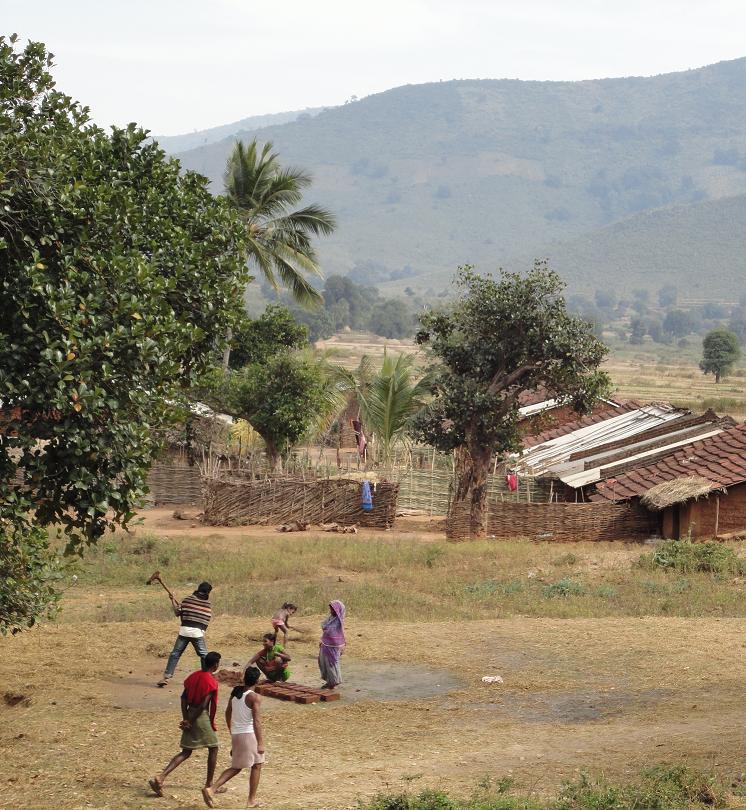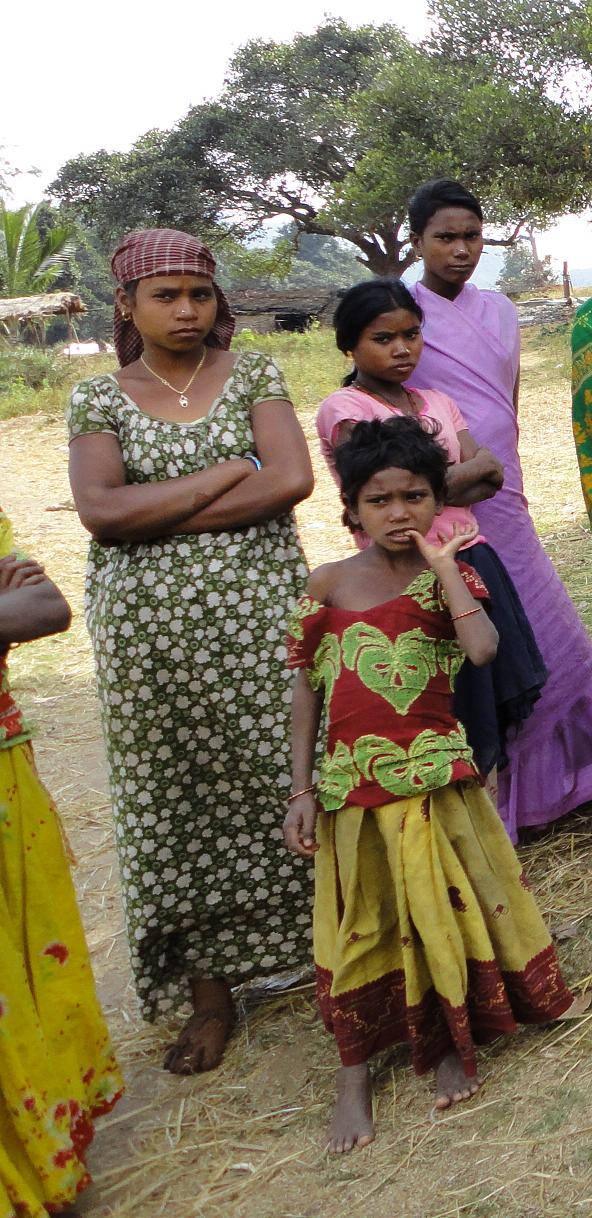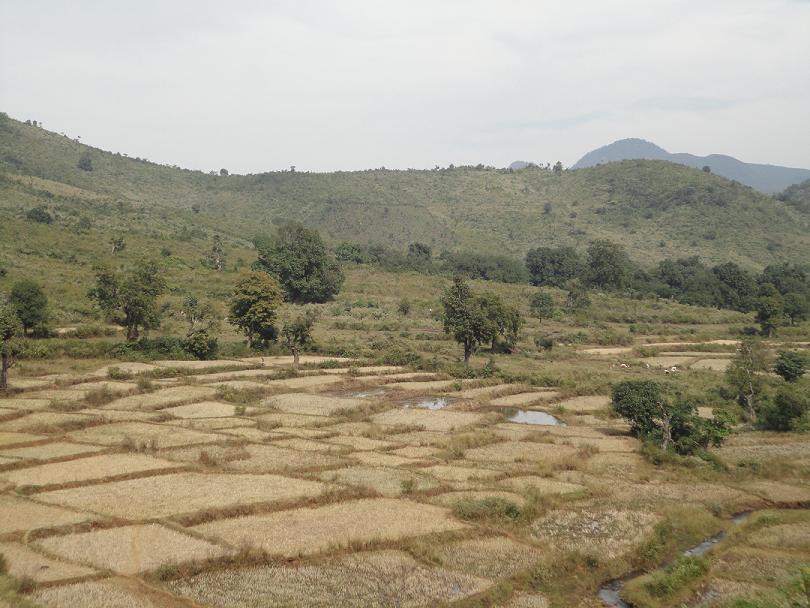By Sobhi Mohanty
Theory and questions: Institutions and equity
Practitioners of collective action pursue multiple goals. For some of us, these goals go beyond sustainable environmental resource management or economic development. We are also deeply invested in distributional issues - who shares in the wealth generated from economic growth or the stream of benefits from resource management? For us, the goal is designing institutions which achieve not just social and economic development on an aggregate level for a society, but inclusive and equitable development where benefits are fairly distributed across all sections of society. This essay focuses on issues related to women's empowerment, their access to resources and their participation in local institutional structures. It intends to demonstrate where the institutional challenges of the above goal lay, while highlighting a polycentric approach[1] that might be fruitful for practitioners to address.
The wide range of cultural norms and values in different parts of the world can make the question of equity difficult to both conceptualize and to achieve. Economic, social and political institutions are closely related, and deeply embedded within a society's culture. Hence, effecting change in one set of institutions also requires working on changing related institutional structures. This is clearly a very challenging task. Even when traditional institutions are successful at managing local governance they may perpetuate certain inequities that are equally bound up in this set of traditions. This makes it important to understand the complete set of outcomes that emerges from the institutions being advocated for any one cause. The Institutional Analysis and Development (IAD) framework developed by Elinor Ostrom and colleagues can be a powerful tool for addressing such complex problems.
Institutions may be understood to be all those societal constraints that structure the social, economic and political choices available to us, such as the incentives that make us prefer one choice over another. Taken as a whole these choices lead to regularized patterns of behavior by individuals, groups of individuals, and societies at large[2]. In its approach to the study of institutions, the Institutional Analysis and Development (IAD) framework developed by Elinor Ostrom and colleagues highlights the idea that an individual's decision-making procedure is intricately linked to the actions and decisions of other individuals[3]. Individual behavior is often explicitly contingent upon a person's expectation of others? behaviors. For example, before engaging in formal and informal collaborations with others we often ask, "How trustworthy is so-and-so?" Face to face communication can be important here because it allows people to gauge each others' reliability[4]. Communication with a third party can also play a role in allowing people to access information about who to trust; we often call this "reputation". Within this framework, trust becomes a form of expectation regarding others' behaviors while communication becomes a way to acquire information about such behavioral expectations, with both influencing one's choice of strategy[5].
Contributors from the Ostrom Workshop collaborated in creating supplementary information to assist readers with some of the technical language, basic tools, and key concepts they work with. They include the following three sections:
Many of the communities targeted by collective action practitioners and grassroots activists comprise people who have known and interacted with each other consistently, over long periods of time. When the same individuals engage with each other over and over again, whether in the same context or in different ones, they form certain expectations regarding the others' attributes and use their experiences to gauge how the others are likely to behave in certain situations. In other words, these repeated interactions allow individuals to gain information about each other and then use this information to plan their own course of action. Where individuals engage in complex sets of interactions with each other - individuals living in the same neighborhood for example engage with each other on a daily basis in a variety of ways - information gained from one set of interactions may influence behaviors in a different context altogether. Thus individuals that work collectively to solve a problem at the local resource may cooperate to a greater extent if they trust each other to carry out their designated responsibilities, yet this trust may stem from the numerous, small interactions that themselves are influenced by a number of other social and cultural contextual factors[6].
From this above discussion then, one might be led to believe that the best way for promoting cooperation and assuring the success of a collective action initiative is to allow individuals within that collective to engage with each other repeatedly, both over a period of time as well as in a variety of contexts. After all, this is likely to foster trust and allow for greater flow of information within the group, both about the problem and about each others' behaviors. But grassroots activists and collective action practitioners need to approach these assumptions with a healthy dose of skepticism and place these theoretical insights into a real world context. Upon doing so, questions such as the following emerge.
What happens when there are inequities within the group such that prevent certain members participating in this communal conversation?
Does taking governance to the communal or local level ensure that hitherto marginalized and underprivileged groups will now be included in decision-making and be given their fair share of the benefits from the resource or activity?
Are inequities no longer perpetuated when one implements a more localized, grassroots approach to social and political governance?
These questions remain a puzzle for policymaking, perhaps because it is difficult to agree upon the definition and implications of such inequity[7]. For example, is it more important to ensure that no one in the community is systematically excluded from participating in local governance or is it more important to focus on ensuring that the local government - even when controlled by the local elite - allows everyone equal access to welfare benefits?

Institutions and women: A case in rural India
Here's a story that illustrates the situation. On my most recent trip to the rural areas of the state of Orissa in India, a large, completely unused, privately owned field caught my eye. Land usually represents wealth in the rural, developing world so I was puzzled when I found that the landowning family was actually struggling with poverty. Yet, the other landowning households in the same village were farming their land and seemed wealthier. So why didn't this household farm its huge land and sell excess produce at the local market for a profitable sum? Further interviews revealed more details to this puzzle. First, while this household had land, it did not have access to high quality seeds, fertilizers or irrigation (for a consistent supply of water), which meant it could not farm profitably. Further, the individuals of this particular household belonged to a tribal (indigenous group) group while the farming households mentioned above were mainly Hindus from a different social caste. This difference in social and religious identity led to differing family-labor related norms and different economic opportunities. The Hindu women of this village faced strict restrictions on their interactions with the outside world, and it was unacceptable for them to engage in farming activity. Conversely, the tribal women faced a much more egalitarian labor-related social norm; the men usually migrated periodically to find heavy labor jobs outside the village (depending on the labor market), while the women engaged in farming activity but often also worked as farm laborers on others' farms within the village. In this case, the wife of the tribal landowner had the opportunity to work as a wage laborer on the farm of one of the Hindu landowners in the village while her husband earned income from working in a nearby town. She was earning far less than she would be if she were farming her own land and selling surplus farm output. Yet given her limited access to farm inputs, it was the more profitable - if inefficient - choice.

Baraja village, Orissa (India) : The women of Baraja. Some of these women come from tribal households while others belong to various non-tribal sociocultural groups.
The outcome above is inefficient because while land is a scarce and very valuable commodity in much of the developing world, those who own the land may not be able to use it productively because they lack access to complementary farm inputs. Now if they could sell or rent the land to those with access to such inputs, the outcome would be optimal since it would also allow the poor, landowning household a means to alleviate its poverty. As the case above illustrates, one barrier to an optimal outcome is the way the property rights institution is designed. In many parts of the developing world only the male head of a household is given formal land rights, and allowed to rent, lease or sell the land to another individual. Women are responsible for managing the farmland while the men are away, but without formal ownership rights, are not allowed to manage the transfer of the land to someone who has enough resources to profitably farm the land. Since women are not able to participate in local land rental or sales markets then, they usually find employment on someone else's land instead. Research into other empirical studies reveals that this is actually a commonly documented scenario[8], an unfortunate outcome in a climate of growing land scarcity and global food insecurity
This story would seem to have a simple solution - allow women joint formal land rights. However, the issue of women's land rights is still an issue of contention since property rights institutions are closely related to other social institutions and norms regarding wealth distribution, inheritance customs and so on. Access to land via formal ownership rights is an important tool of poverty reduction because individuals can use land as collateral to access credit (loans) that they can invest into other employment opportunities, education and so on[9]. On the other hand, allowing women such formal access to land means enabling them to participate in economic markets to a much greater extent than might be socially acceptable in many places. Thus even when formal institutional structures of land ownership make opportunities of welfare improvement available to women in many parts of the world, informal institutions manifested through social taboos may prevent women from making use of these available opportunities[10]. Further, in many parts of the world, a lack of education regarding legal rights means that many reforms fail to create their intended impact on the ground[11]. As issues such as these begin to be recognized, a number of NGOs and governments are working on creating policies that bring about not only land reform that targets women, but also enabling women to then make profitable economic use of that land based on available resources in order to access other welfare benefits (education, higher income and health)[12].
Allowing individuals ownership rights over an economic resource such as land can also have political ramifications. In parts of India where both land reforms and political reforms (in the form of decentralization of governance down to the village level) have been relatively successful, it has been suggested that simultaneously redistributing land and giving political powers to local governments enhanced political participation by previously marginalized sections of village society who lacked both social and economic powers. At the same time, emphasizing political participation by marginalized groups has also appeared to have benefits for poverty alleviation of these groups[13]. Applying this lesson to women's political exclusion then, focusing on granting women greater economic power within traditional social institutions may not only allow them financial security, but may shift the power balance within local, traditional political institutions such that women also get a political voice.

Baraja village, Orissa (India) : A privately owned field belonging to a 'tribal' household. The field lies unused, while the household usually practices small-scale farming in the adjoining forest by clearing small parts of it.
Conclusion
Given that local institutions of collective action operate within a larger institutional framework, one solution to problems such as the above is to create supporting institutions - external dispute resolution bodies, institutions that ensure women's legal rights and so on - that keep these local institutions functioning optimally while still providing some checks and balances. Problems related to achieving equitable outcomes can occur at any governance level, from local to central[14]. Literature suggests that complementary institutions be designed so as to help overcome cooperation problems between various groups at any one level.[15] This is the "polycentricity" approach to institutional design, and it is discussed by my colleagues in other articles of this GEO issue. Such external supporting institutions may be important to ensuring that collective action institutions at the local level include all stakeholders rather than excluding groups that may have traditionally been marginalized.
The permanent link to this article is http://geo.coop/node/653
About the author
 Sobhi Mohanty
Sobhi Mohanty
Status : PhD student
Program : Public Policy & Political Science
Affiliation : Workshop in Political Theory & Policy Analysis
My shift to the social sciences after an undergraduate and a masters in the biological sciences puzzled many, but to me it was the most direct way to understand the often distressing social problems I saw around me. Even while doing animal behaviour research, informal research trips to rural India and Central America solidified my desire to grasp the links between environmental, economic and social issues and use this understanding to help design policies especially for the socioeconomically marginalised communities of the developing world.
My dissertation research interests have been shaped by growing up in a small town in eastern India and witnessing first-hand the multilevel complexities of managing the diverse interests of a heterogeneous, newly industrialising society. Specifically though, my questions address the alleviation of rural poverty in developing countries. This requires my understanding the range of social and economic decisions that rural households make about allocating their limited resources toward current welfare gains versus investing in future prospects. The rural poor face live in a fluctuating environment - unstable agricultural markets, uneven employment sources, uncertain access to land even for subsistence farming - and it is important to understand their adaptive strategies when trying to design related policies. Socioeconomic welfare of the rural poor is not a unidimensional issue; education, gender rights, land rights, access to credit and other issues are intricately linked. While one cannot address each of these aspects in a single dissertation, my goal is the conceptual clarification regarding how pieces of this larger puzzle fit together. My goal is to use the clarity so gained in order to contribute to policymaking in the international development sector in a concrete, relevant and meaningful manner in the years after my doctorate.
Citations
When citing this article, please use the following format:
Sobhi Mohanty (2011). Local Institutions and Inequity. How can Institutional Analysis help?
Grassroots Economic Organizing (GEO) Newsletter, Volume 2, Issue 9.
http://geo.coop/node/653
Endnotes
[1] According to one of the original conceptualizations of polycentricity as advanced by Vincent Ostrom, a polycentric political system is not a traditional, hierarchical structure of authority where decision-making powers are vested within any one group of officials or in any one type of formal institution. On the contrary, there are multiple centers of authority that can both make and enforce rules and policies. What this does is remove the barriers between the "ruled" and the "rulers" such that those responsible for making the rules are held accountable to the ruled by the means of various institutional structures. [Ostrom, V. (1999). Polycentricity. In M. McGinnis (Ed.), Polycentricity and Local Public Economies (55-56). Ann Arbor: The University of Michigan Press]. One helpful way to understand this may be to think of an institutional structure where everyone is answerable for their political decisions, a well-functioning system of checks and balances such that no one group of individuals has complete power over others.
[2] North, D. Institutions. (1991). The Journal of Economic Perspectives, 5(1), 97 - 112
[3] Ostrom, E. (2005). Understanding Institutional Diversity. New Jersey, US: Princeton University Press.
[4] Ostrom, E. (1998). A behavioral approach to the rational choice theory of collective action: Presidential Address, American Political Science Association, 1997. The American Political Science Review, 92(1), 1 - 22
[5] Dasgupta, Partha. (2003). Social capital and economic performance: Analytics. In Elinor Ostrom, T.K. Ahn, (Eds.), Foundations of Social Capital. MA, USA: Edward Elgar Publishing Limited.
[6] Ostrom, E. (1998). A behavioral approach to the rational choice theory of collective action: Presidential Address, American Political Science Association, 1997. The American Political Science Review, 92(1), 1 - 22
[7] For a relatively accessible exposition on inequality, see this reference: Sen, Amartya. (1992). Inequality Reexamined. NY: Russell Sage Foundation.
[8] Ellis, F, Allison, E. (2004). Livelihood diversification and natural resource access. FAO Livelihood Support Programme Working Paper 9.
[9] de Janvry, A, Gordillo,G, Sadoulet, E, Platteau, JP. (2001). Access to land, rural poverty and public action. Oxford, UK: Oxford University Press.
[10] Giovarelli, R, Wamalwa, B. (2011). Issue Brief: Land Tenure, Property Rights, and Gender Challenges and Approaches for Strengthening Women's Land Tenure and Property Rights Governance. USAID Land Tenure and Property Rights Portal. Retrieved from http://www.usaidlandtenure.net/usaidltprproducts/issue-briefs/challenges-and-approaches-for-strengthening-women2019s-land-tenure-and-property-rights/view
[11] Deininger, K, Ali, DA, Yamano, T. (2008). Legal knowledge and economic development: The case of land rights in Uganda. Land Economics, 84(4), 593 - 619
[12] As a quick introduction to examples of work being done by NGOs on issues of economic rights of women across the world, see the UN Women site on property rights for women: http://www.unifem.org/gender_issues/women_poverty_economics/land_property_rights.php
and also see the Landesa website describing their work in securing land rights for women: http://www.landesa.org/women-and-land/
[13] (a) Bardhan, P, Mookherjee, D. (2006). Land reform, decentralized governance and rural development in West Bengal. Retrieved from http://ase.tufts.edu/econ/papers/mookherjee.pdf
(b) Dasgupta, B. (1995). Institutional reforms and poverty alleviation in West Bengal. Economic & Political Weekly, 30(41/42), 14 - 21.
[14] (a) Bardhan, P, Mookherjee, D. (2003). Decentralization and accountability in infrastructure delivery in developing countries. The Economic Journal, 116(508), 101 - 127
(b) Bardhan, P, Mookherjee, D. (2005). Decentralizing antipoverty program delivery in developing countries. Journal of Public Economics, 89, 675 - 704
(c) For an example of a local-level political institutional analysis see the following paper that uses case studies from India. Ghatak, M., Ghatak, M. (2002). Recent reforms in the panchayat system in West Bengal: Toward greater participatory governance? Economic & Political Weekly, 37(1), 45 - 47
[15] Andersson, KP, Ostrom, E. (2008). Analyzing decentralized resource regimes from a polycentric perspective. Policy Sciences, 41, 71-93

Add new comment